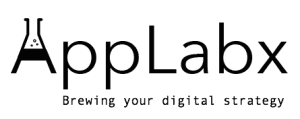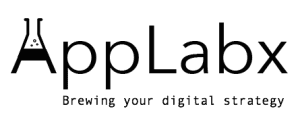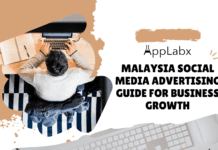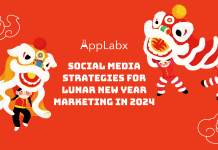Key Takeaways
- Bing optimization involves tailoring your website to rank higher on Microsoft’s Bing search engine using specific SEO techniques.
- Key ranking factors include exact-match keywords, structured data, and integration with Bing Webmaster Tools.
- Optimizing for Bing enhances visibility across Microsoft platforms, drives quality traffic, and offers lower competition than Google.
In the ever-evolving landscape of digital marketing, search engine optimization (SEO) remains a fundamental strategy for businesses aiming to increase their online visibility and attract targeted traffic. While Google continues to dominate the search engine market with a commanding share, it is crucial for marketers and website owners to recognize the significant role played by other search engines—particularly Bing. Bing, owned by Microsoft, is often underestimated but commands a notable share of the global search market, making it an essential platform for comprehensive SEO strategies in 2025 and beyond.
Bing Optimization refers to the tailored process of optimizing a website specifically for Bing’s search engine algorithms and ranking criteria. Unlike traditional SEO that primarily focuses on Google, Bing Optimization requires understanding the unique ways Bing evaluates web content, user behavior, and technical site attributes. This approach ensures that businesses do not miss out on valuable traffic from Bing users, who often represent distinct demographics and search intent compared to Google’s audience.

As search engines diversify and user preferences evolve, relying solely on Google optimization limits a brand’s reach and potential growth. Bing’s integration with the Microsoft ecosystem—including Windows, Office, and Edge browser—means it serves millions of users daily, especially in markets like the United States where it holds a substantial user base. Moreover, Bing’s search results often present different ranking factors, such as a stronger emphasis on social signals, multimedia content, and certain backlink profiles, which require a specialized SEO approach.
This blog will explore what Bing Optimization entails, how Bing’s search algorithm works, and why it is essential for businesses to adapt their SEO strategies accordingly. By understanding the nuances of Bing’s platform, marketers can enhance their visibility, improve organic traffic, and capitalize on a less competitive yet highly valuable segment of search engine users. Whether you are a small business owner, a digital marketer, or an SEO professional, mastering Bing Optimization can unlock new opportunities for growth and brand recognition in today’s competitive online environment.
But, before we venture further, we like to share who we are and what we do.
About AppLabx
From developing a solid marketing plan to creating compelling content, optimizing for search engines, leveraging social media, and utilizing paid advertising, AppLabx offers a comprehensive suite of digital marketing services designed to drive growth and profitability for your business.
AppLabx is well known for helping companies and startups use SEO to drive web traffic to their websites and web apps.
At AppLabx, we understand that no two businesses are alike. That’s why we take a personalized approach to every project, working closely with our clients to understand their unique needs and goals, and developing customized strategies to help them achieve success.
If you need a digital consultation, then send in an inquiry here.
What is Bing Optimization and How It Works
- Understanding Bing Search Engine
- What is Bing Optimization?
- How Bing’s Algorithm Works
- Key Elements of Bing Optimization
- How to Perform Bing Optimization Step-by-Step
- Benefits of Bing Optimization for Businesses
- Common Challenges and How to Overcome Them
1. Understanding Bing Search Engine
To effectively optimize for Bing, it is essential first to understand what Bing is, its market position, and how it differs from other search engines like Google. This section provides a comprehensive overview of Bing’s search engine landscape, its user demographics, and the unique features that influence how it processes and ranks content.
1. Overview of Bing’s Market Share and Position
- Bing’s Market Share in 2025
- Globally, Bing holds approximately 6-8% of the search engine market.
- In the United States, Bing’s market share rises to around 12-15%, making it the second most popular search engine after Google.
- Bing powers Yahoo Search, increasing its reach further through partnership networks.
- Growth Trends
- Bing’s integration with Microsoft products, such as Windows 11, Microsoft Edge, and Office, contributes to steady user engagement.
- Voice search and AI integration within Bing are gaining traction, appealing to a growing user base.
- User Demographics
- Bing users tend to skew older, with a significant portion aged 35 and above.
- Higher income and education levels are more prevalent among Bing’s audience compared to other search engines.
- Businesses targeting professional and niche audiences benefit from Bing’s demographic.
2. Key Differences Between Bing and Google Algorithms
| Feature | Bing | |
|---|---|---|
| Market Share | 6-15% globally | ~90% globally |
| Algorithm Focus | Emphasis on exact keyword matches, multimedia, and social signals | Semantic search, user intent, AI-driven context understanding |
| Backlink Valuation | Prioritizes quality backlinks, but also values anchor text diversity | Highly sophisticated link evaluation, penalizes link manipulation |
| Multimedia Search | Strong focus on image, video, and map integrations | Also strong, but Google dominates multimedia with YouTube integration |
| Local SEO | Bing Places integration for local listings | Google My Business is more widely used |
| AI & Machine Learning | Growing AI capabilities, integrated with Microsoft AI tools | Advanced AI with BERT and MUM models |
| Social Signals Influence | More influenced by social signals and shares | Limited direct influence on ranking |
3. Unique Features and Search Capabilities of Bing
- Integration with Microsoft Ecosystem
- Bing powers search across Windows devices, Microsoft Edge browser, and Office tools.
- Cortana, Microsoft’s virtual assistant, utilizes Bing for voice search queries.
- This integration provides seamless search experiences within productivity and operating system environments.
- Visual Search and Image Recognition
- Bing’s Visual Search allows users to search using images rather than text, improving discovery for products and landmarks.
- Example: Users can upload a photo of a product, and Bing will return related shopping results and product details.
- Video Search Interface
- Bing’s video search provides thumbnail previews when hovering over videos.
- It often directs users to platforms beyond YouTube, including Vimeo and Facebook videos.
- Local Search with Bing Places
- Businesses can claim and optimize their Bing Places listing, similar to Google My Business.
- Local search results in Bing prioritize verified business listings with accurate contact information, photos, and reviews.
4. User Behavior Patterns on Bing
- Search Intent
- Bing users often conduct more transactional and commercial searches, such as product research or service inquiries.
- Due to the older demographic, searches may lean towards finance, health, and professional services.
- Device Usage
- A significant portion of Bing searches originate from desktop devices, unlike Google which sees a higher mobile search ratio.
- This affects how websites should prioritize desktop user experience for Bing optimization.
5. Comparative Matrix: Bing vs Google User Behavior and Search Experience
| Aspect | Bing Users | Google Users |
|---|---|---|
| Age Group | Primarily 35+ years | Broad age range, strong youth segment |
| Device Preference | Desktop-heavy | Mobile-heavy |
| Common Search Categories | Finance, shopping, health, news | Wide range: entertainment, local, e-commerce |
| Voice Search Adoption | Increasing, linked to Cortana | Highly developed with Google Assistant |
| Engagement Time on SERP | Longer due to detailed search results | Generally shorter, fast answers |
Summary
Understanding Bing’s search engine framework and its user base is critical to crafting an effective Bing Optimization strategy. Bing’s unique blend of search algorithm characteristics, integration within the Microsoft ecosystem, and a distinct demographic profile offers opportunities that differ significantly from Google’s environment. Businesses aiming to leverage Bing for SEO should focus on catering to these nuances—from keyword targeting to technical SEO and user experience—to maximize organic visibility and traffic.
2. What is Bing Optimization?
Bing Optimization is the practice of tailoring website content, technical elements, and overall SEO strategy to improve rankings and visibility specifically on Bing’s search engine. While SEO generally targets multiple search engines, Bing Optimization focuses on the unique ranking signals, user behavior, and ecosystem integration that Bing utilizes to deliver search results.
1. Definition and Scope of Bing Optimization
- Core Definition
- Bing Optimization involves adjusting website factors, keyword strategies, and backlink profiles to align with Bing’s ranking algorithms.
- It aims to enhance organic visibility on Bing search results pages (SERPs), including Bing’s image, video, and local search verticals.
- Scope of Optimization
- Keyword research tailored to Bing’s search trends and user intent.
- On-page SEO, including meta tags, headers, and content relevancy optimized for Bing.
- Technical SEO focused on website performance, schema markup, and crawlability per Bing Webmaster Tools recommendations.
- Off-page SEO through backlinks and social signals valued by Bing’s algorithm.
- Local SEO via Bing Places and local listing management.
- Leveraging Bing’s unique integrations such as Microsoft Advertising and AI-powered features.
2. How Bing Optimization Differs from General SEO and Google SEO
- Focus on Bing-Specific Ranking Factors
- Bing places greater emphasis on exact keyword matches in titles and meta descriptions.
- Social signals (e.g., shares and likes on platforms like Facebook and Twitter) have a more direct influence on Bing rankings.
- Multimedia content, such as images and videos, play a larger role in Bing’s search results.
- Differences in Algorithm Behavior
- Bing’s algorithm is more conservative with synonyms and semantic search; it values exact phrases more strongly.
- It tends to reward well-structured websites with clear navigation and consistent use of metadata.
- Example Comparison:
- A site ranking well on Google for a broad keyword phrase may not rank as high on Bing unless it also uses exact match keywords and strong social engagement.
- For instance, a blog post titled “Best Running Shoes for Marathon 2025” may rank well on Google with semantic keywords, but on Bing, a more literal title with exact phrase matching might perform better.
3. Core Objectives of Bing Optimization
- Maximize Organic Visibility on Bing
- Capture traffic from Bing’s unique user base.
- Improve rankings for Bing-specific search features (e.g., image packs, video carousels).
- Enhance User Experience for Bing’s Audience
- Optimize site speed and mobile responsiveness, with a desktop-first approach given Bing’s user device preference.
- Provide clear and precise content to meet Bing users’ expectations.
- Leverage Microsoft Ecosystem
- Integrate with Bing Webmaster Tools to monitor performance.
- Utilize Microsoft Advertising campaigns for complementary paid search strategies.
4. Common Misconceptions About Bing Optimization
| Misconception | Reality |
|---|---|
| “Bing SEO is just the same as Google SEO” | Bing optimization requires distinct keyword and social signal strategies. |
| “Bing doesn’t matter because it has a small market share” | Bing’s market share is significant in key demographics and regions. |
| “Bing ignores technical SEO” | Bing values technical factors like schema, crawlability, and site speed. |
| “Social media has no impact on SEO” | Social signals play a more substantial role in Bing rankings. |
5. Examples of Bing Optimization in Practice
- Example 1: Local Business
- A restaurant optimizing its Bing Places profile sees a 30% increase in local traffic via Bing due to accurate listings, photos, and reviews.
- Adding schema markup for menus and events improves visibility in Bing’s local search results.
- Example 2: E-commerce Website
- An online retailer focusing on exact match keywords in product titles and descriptions gains higher Bing rankings.
- Integration with Bing Visual Search allows users to find products via images, increasing engagement.
- Example 3: Content Publisher
- A news website improves its social media shares on Twitter and Facebook, which positively affects its Bing rankings.
- Enhanced video content optimized for Bing Video Search attracts additional traffic.
6. Bing Optimization Checklist
| Optimization Area | Key Actions | Tools/Resources |
|---|---|---|
| Keyword Research | Target exact match keywords; analyze Bing trends | Bing Webmaster Tools, Keyword Planner |
| On-Page SEO | Optimize meta titles/descriptions; use clear headers | Screaming Frog, Yoast SEO |
| Technical SEO | Improve site speed; implement schema markup; ensure crawlability | Google PageSpeed Insights, Bing Webmaster Tools |
| Content Strategy | Focus on multimedia content; regularly update blog posts | Canva (for visuals), video editors |
| Off-Page SEO | Build quality backlinks; encourage social sharing | Ahrefs, Moz, Social media platforms |
| Local SEO | Claim Bing Places listing; add local citations | Bing Places, Moz Local |
| Analytics & Monitoring | Track performance with Bing Webmaster Tools; adjust strategy accordingly | Bing Webmaster Tools, Google Analytics |
7. Summary
Bing Optimization is a specialized SEO approach designed to harness Bing’s unique search environment and user base. It goes beyond traditional SEO by emphasizing exact keyword usage, social signals, multimedia content, and integration within Microsoft’s ecosystem. Businesses that invest in Bing Optimization can tap into a valuable segment of search users, diversify their traffic sources, and improve overall digital marketing effectiveness.
3. How Bing’s Algorithm Works
Bing’s search algorithm determines how content is discovered, indexed, and ranked on its search engine results pages (SERPs). While Bing and Google share foundational SEO principles, they differ significantly in how they prioritize ranking signals. Understanding the mechanics of Bing’s algorithm is critical for creating tailored SEO strategies that perform well specifically on Bing.
1. Overview of Bing’s Core Ranking Signals
Bing’s algorithm evaluates a range of on-page, off-page, and technical factors to rank content. Key ranking signals include:
- Keyword relevance and placement
- Quality and authority of backlinks
- User engagement metrics
- Multimedia integration (images, video)
- Website structure and technical health
- Mobile and desktop compatibility
- Social signals and content sharing
- Page load speed and user experience
2. On-Page SEO Signals in Bing’s Algorithm
- Exact-Match Keywords Are Crucial
- Bing gives more weight to exact-match keywords in:
- Page titles
- Meta descriptions
- H1 and H2 tags
- Image alt attributes
- Example: A page titled “Best Hiking Boots for Winter” with exact keyword repetition will likely outperform a semantically similar title like “Top Footwear Choices for Cold Weather.”
- Bing gives more weight to exact-match keywords in:
- Content Relevance and Quality
- Bing values:
- Clear, structured, and concise content
- Content that answers queries directly
- Use of bullet points, headers, and semantic structure
- Preferred formatting: Structured long-form content with FAQs and lists.
- Bing values:
- Multimedia Optimization
- Pages with rich media (images, infographics, videos) tend to rank higher.
- Bing’s algorithm scans:
- Image file names
- Alt text
- Caption text
3. Off-Page SEO and Backlink Analysis
- Backlink Authority and Diversity
- Bing evaluates:
- Quantity and quality of backlinks
- Anchor text variety
- Domain trust and age
- Older domains with strong backlink profiles perform better on Bing.
- Bing evaluates:
- Social Signals Are Weighted Heavily
- Bing considers engagement from platforms like:
- Example: A blog post with high shares and likes on social media can boost its Bing rankings.
- Bing considers engagement from platforms like:
4. User Engagement and Behavioral Metrics
Bing analyzes real user data to assess content quality:
- Click-Through Rate (CTR)
- Higher CTR in Bing SERPs signals content relevance.
- Dwell Time
- If users spend more time on a page after clicking from Bing, the algorithm rewards the page.
- Bounce Rate
- Lower bounce rates suggest strong content match to user intent.
| User Metric | Impact on Ranking | Optimization Strategy |
|---|---|---|
| CTR | High | Write compelling meta titles and descriptions |
| Dwell Time | High | Provide in-depth content, avoid pop-ups |
| Bounce Rate | Medium-High | Ensure page relevance, speed, and readability |
5. Bing’s Interpretation of Search Intent
- Bing is Less Aggressive with Semantic Search
- Prefers literal keyword matching over synonyms or related terms.
- Example: The query “affordable wedding venues” may not rank a page optimized for “cheap event locations” unless the exact phrase is present.
- Search Vertical Integration
- Bing distinguishes intent across:
- Shopping: Prioritizes price, product schema, and image-rich listings.
- Local: Integrates Bing Places and location data.
- News: Favors freshness and publisher authority.
- Bing distinguishes intent across:
6. The Role of AI and Machine Learning in Bing’s Algorithm
- Integration with Microsoft AI
- Bing uses machine learning to improve:
- Entity recognition
- Spelling correction
- Query rewriting
- Auto-suggestions
- Bing uses machine learning to improve:
- Understanding Context
- While not as advanced as Google’s BERT or MUM, Bing does use contextual AI to:
- Disambiguate queries (e.g., “Apple” as fruit vs. company)
- Match content relevance to intent
- While not as advanced as Google’s BERT or MUM, Bing does use contextual AI to:
- Visual Search AI
- Bing’s Visual Search uses AI to allow:
- Image-based queries
- Object detection in photos
- Product recommendations from images
- Bing’s Visual Search uses AI to allow:
7. Technical SEO Signals Evaluated by Bing
| Technical Factor | Bing’s Focus | Optimization Tips |
|---|---|---|
| Page Speed | Important, especially for desktop searches | Compress images, minify JS/CSS |
| Mobile-Friendliness | Important but slightly less weighted than Google | Use responsive design and test with Bing tools |
| Secure Protocol (HTTPS) | Strong ranking signal | Use SSL certificates |
| Structured Data | Recommended for rich results | Implement Schema.org markup |
| Crawlability | Essential | Submit XML sitemaps via Bing Webmaster Tools |
- Crawl Control
- Bing allows webmasters to:
- Control crawl frequency
- Monitor crawling errors
- Disavow low-quality backlinks
- Bing allows webmasters to:
8. Content Freshness and Indexing
- Indexing Speed
- Bing is slower than Google in indexing new content.
- Manual submission via Bing Webmaster Tools helps speed up the process.
- Freshness Signal
- For topics like news or trending content, Bing values:
- Date stamps
- Recent backlinks
- Regular updates
- For topics like news or trending content, Bing values:
9. Matrix: Bing vs. Google Ranking Signal Comparison
| Signal Type | Bing Emphasis | Google Emphasis | Notes |
|---|---|---|---|
| Exact Match Keywords | High | Moderate | Bing favors precise keyword use |
| Social Media Signals | Moderate to High | Low to None | Bing ranks social-engaged content higher |
| Backlink Quality | High | Very High | Both engines prioritize credible links |
| Semantic Search | Low to Moderate | Very High | Google’s BERT is more advanced |
| Dwell Time & CTR | High | High | Engagement metrics are key for both |
| Structured Data | Moderate | Very High | Google relies more on schema for featured snippets |
| Domain Age/Authority | High | Moderate | Bing trusts older domains more |
| AI in SERP Refinement | Growing | Advanced | Google leads in NLP and AI-based search refinement |
Summary
Bing’s algorithm rewards websites that deliver literal keyword relevance, strong user engagement, and trustworthy link profiles. While it shares many SEO principles with Google, its unique ranking signals—such as the higher weight placed on social signals, exact-match keywords, and multimedia content—necessitate a tailored optimization approach. Understanding how Bing’s algorithm evaluates content, behavior, and site architecture allows businesses to unlock untapped traffic potential from a less competitive yet influential search engine ecosystem.
4. Key Elements of Bing Optimization
Bing Optimization involves a range of technical, on-page, off-page, and content-specific strategies aimed at increasing visibility within Bing’s search ecosystem. To succeed in Bing’s SERPs, webmasters must align their tactics with Bing’s algorithmic preferences, which differ in many ways from Google’s. This section explores all the critical elements of Bing Optimization and how to apply them effectively.
1. Keyword Strategy for Bing
- Exact Match Keyword Focus
- Bing prioritizes exact-match keywords more than semantic or synonym-based variations.
- Use precise keywords in:
- Title tags
- Meta descriptions
- Headings (H1-H3)
- Image alt text
- URL slugs
- Long-Tail Keywords
- Bing users often use longer and more descriptive queries.
- Optimize content for long-tail keyword phrases such as:
- “Best laptops under $1000 for students”
- “Affordable wedding venues in Los Angeles with catering”
- Example Table: Keyword Placement Effectiveness in Bing
| Element | Impact Level on Bing SEO | Optimization Tip |
|---|---|---|
| Title Tag | Very High | Use exact match keywords at the beginning |
| Meta Description | High | Include primary keyword naturally |
| URL | High | Use clean, short URLs with target keywords |
| Image Alt Text | Medium | Use descriptive, keyword-rich alt attributes |
| Body Content | High | Maintain proper keyword density (~1.5% to 2%) |
2. On-Page SEO Factors
- HTML Structure and Header Tags
- Use H1 for the main topic and H2/H3 for sub-topics.
- Ensure logical and consistent hierarchy for crawlability.
- Meta Tags
- Write unique and descriptive meta titles (65 characters) and descriptions (150–160 characters).
- Avoid duplication across pages.
- Internal Linking
- Use keyword-rich anchor text to improve contextual relevance.
- Connect related articles and product/service pages.
- Multimedia Integration
- Add relevant images, infographics, and videos.
- Name files with descriptive, keyword-inclusive terms (e.g.,
2025-digital-marketing-trends.png).
- Example: Blog Post Optimization for Bing
- Title: “Top SEO Tools for 2025”
- Slug:
/seo-tools-2025 - Headers: Use H2s for tools categories, H3s for each tool
- Multimedia: Include comparison tables and screenshots
- Alt Text: “Semrush dashboard for keyword tracking 2025”
3. Technical SEO for Bing
- Crawlability and Indexing
- Submit XML sitemaps via Bing Webmaster Tools.
- Ensure robots.txt is correctly configured.
- Page Speed Optimization
- Bing emphasizes performance, especially on desktop.
- Minimize CSS, JavaScript, and enable browser caching.
- Mobile Compatibility
- Use responsive design.
- Even though Bing is more desktop-heavy, mobile optimization remains essential.
- HTTPS Protocol
- Use SSL certificates as Bing gives preference to secure websites.
- Structured Data & Schema Markup
- Add schema.org markup for:
- Articles
- Products
- FAQs
- Reviews
- Enables enhanced SERP features in Bing like rich cards.
- Add schema.org markup for:
- Chart: Bing Technical SEO Scorecard
| Technical Element | Bing Importance | Optimization Tools |
|---|---|---|
| XML Sitemap | Essential | Bing Webmaster Tools, Screaming Frog |
| Site Speed | High | GTmetrix, Google PageSpeed Insights |
| SSL (HTTPS) | High | Let’s Encrypt, Cloudflare |
| Schema Markup | Medium-High | Schema.org, RankMath, Yoast |
| Mobile Responsiveness | Medium | Google Mobile-Friendly Test |
4. Content Strategy
- Content Depth and Authority
- Long-form content performs well on Bing.
- Include data, statistics, real-world examples, and multimedia.
- Keyword Clarity and Repetition
- Maintain 1.5%–2% keyword density for target phrases.
- Repeat primary keywords naturally within sub-headings and body.
- Freshness
- Update content regularly.
- For example, “Top SEO Trends in 2025” should be updated quarterly with new insights.
- Multimedia and Visual Search Compatibility
- Bing favors content with visuals, especially for:
- How-to guides
- Product reviews
- Infographics
- Bing favors content with visuals, especially for:
- Content Table: What Bing Considers High Quality
| Attribute | Description | Example |
|---|---|---|
| Relevance | Direct match to search query | “Best budget smartphones under $300” |
| Depth | Covers topic in full detail | Guide with specs, pros/cons, and comparison charts |
| Originality | Unique perspective and insights | First-hand case studies or niche analysis |
| Engagement | Encourages dwell time and low bounce rate | Interactive tools, visual explanations |
| Format | Structured with headers, bullets, and media | Listicles, tables, and embedded YouTube videos |
5. Off-Page SEO for Bing
- Backlink Profile
- Bing values:
- High-authority inbound links
- Older, established referring domains
- Avoid spammy links; use Bing’s disavow tool for toxic backlinks.
- Bing values:
- Social Media Signals
- Bing openly incorporates social metrics into rankings.
- Facebook and Twitter shares are especially influential.
- Local Citations and Directory Listings
- Ensure business listings are consistent across:
- Bing Places
- Yelp
- TripAdvisor
- Yellow Pages
- Ensure business listings are consistent across:
- Reputation Management
- Bing considers brand mentions and reviews.
- Encourage positive third-party reviews and PR coverage.
- Example: Local SEO for a Restaurant
- Claim and optimize Bing Places profile.
- Include address, phone number, hours, and images.
- Respond to customer reviews on Bing Maps.
6. Analytics, Monitoring, and Bing Webmaster Tools
- Bing Webmaster Tools Features
- Submit and monitor sitemaps
- View keyword rankings and impressions
- Identify crawling issues
- Disavow backlinks
- Performance Monitoring
- Track:
- Indexed pages
- Keyword CTR and positions
- Site health score
- Track:
- Integration Recommendations
- Connect Bing Webmaster Tools with tools like:
- Microsoft Clarity (session recordings and heatmaps)
- Screaming Frog SEO Spider
- SEMrush or Ahrefs (for backlink audits)
- Connect Bing Webmaster Tools with tools like:
7. Visual Summary: Bing Optimization Matrix
| SEO Element | Importance on Bing | Key Action | Priority |
|---|---|---|---|
| Exact Keywords | Very High | Use in title, meta, headers, URL | High |
| Backlinks | High | Focus on aged, trusted domains | High |
| Social Signals | High | Increase Facebook/Twitter shares | High |
| Structured Data | Medium | Use schema.org tags | Medium |
| Page Speed | High | Optimize images and scripts | High |
| Content Freshness | Medium | Update regularly | Medium |
| Mobile Design | Medium | Use responsive layouts | Medium |
| Multimedia | Medium | Add videos, infographics, and descriptive alt text | Medium |
Summary
Mastering Bing Optimization requires attention to both traditional SEO fundamentals and Bing-specific nuances. By prioritizing exact-match keywords, enhancing user engagement through multimedia, leveraging social signals, and using Bing Webmaster Tools to monitor performance, businesses can significantly boost their visibility on Bing. These key elements offer a framework for sustainable Bing-focused SEO that aligns with how Microsoft’s algorithm evaluates, ranks, and displays content across its ecosystem.
5. How to Perform Bing Optimization Step-by-Step
Optimizing for Bing requires a structured and intentional strategy. While many SEO principles overlap with Google, Bing has its own set of ranking preferences. Below is a comprehensive, step-by-step guide designed to help webmasters, marketers, and businesses implement a Bing-focused SEO plan for maximum visibility.
1. Set Up Bing Webmaster Tools
- Create and Verify an Account
- Visit Bing Webmaster Tools
- Sign in using a Microsoft account.
- Add your website and verify ownership using one of the following methods:
- XML file upload
- Meta tag insertion
- DNS record addition
- Submit Your Sitemap
- Submit an XML sitemap directly via the dashboard.
- Example:
https://www.yoursite.com/sitemap.xml
- Enable Crawl Control
- Schedule Bingbot’s crawling times based on your server’s capacity.
- View crawl stats, errors, and blocked URLs.
| Task | Tool Used | Timeframe |
|---|---|---|
| Website Verification | Bing Webmaster Tools | Immediate |
| Sitemap Submission | XML sitemap | Day 1 |
| Crawl Optimization | Crawl Control Settings | Ongoing |
2. Conduct Keyword Research for Bing
- Use Bing’s Keyword Research Tool
- Found inside Bing Webmaster Tools.
- Provides data on:
- Search volume
- Demographics
- Device usage
- Keyword trends
- Focus on Exact Match and Phrase Match
- Prioritize exact keywords over broad matches.
- Example:
- Use “best laptops for video editing” instead of “top computers for creatives.”
- Use Long-Tail and Local Keywords
- Target location-specific queries like:
- “SEO consultant in Kuala Lumpur”
- “Best sushi restaurants near me”
- Target location-specific queries like:
| Keyword Type | Bing Preference | Sample Keywords |
|---|---|---|
| Exact Match | Very High | “affordable SEO tools” |
| Long-Tail | High | “email marketing software for startups” |
| Local | High | “cheap car rental in Berlin” |
3. Optimize On-Page Elements
- Page Titles and Meta Descriptions
- Use primary keyword near the start.
- Titles under 60 characters and meta descriptions under 160.
- Headings (H1-H3)
- Ensure H1 contains the main keyword.
- Use H2/H3 for organizing related sub-topics.
- Content Optimization
- Maintain keyword density between 1.5% and 2%.
- Use bullet points, numbered lists, and visuals.
- Include keywords in first 100 words of content.
- Multimedia Optimization
- Compress images and add keyword-rich alt text.
- Use descriptive filenames like
bing-seo-checklist-2025.jpg.
- URL Structure
- Keep URLs short, keyword-rich, and hyphenated.
- Example:
example.com/bing-optimization-guide
| On-Page Element | Optimization Focus | Best Practices |
|---|---|---|
| Title Tag | Exact-match keyword usage | Use near beginning |
| Meta Description | Keyword + value proposition | Encourage clicks |
| Headings | Organized structure | H1 for main topic, H2s for subtopics |
| Alt Text | Descriptive and keyword-rich | Avoid generic text like “image1” |
| URLs | Clean, readable | No special characters or numbers |
4. Improve Technical SEO for Bing
- XML Sitemap and Robots.txt
- Submit and test your sitemap regularly.
- Ensure
robots.txtdoesn’t block important pages.
- HTTPS and Site Security
- Install an SSL certificate to secure the site with HTTPS.
- Mobile Optimization
- Implement responsive design.
- Use viewport meta tags for mobile rendering.
- Page Speed Enhancement
- Compress images, minify JavaScript and CSS.
- Use tools like GTmetrix and Bing Page Speed Reports.
- Structured Data
- Implement Schema.org for:
- Articles
- Products
- Events
- Local businesses
- Implement Schema.org for:
| Technical Factor | Bing Weight | Optimization Tools |
|---|---|---|
| Sitemap | Essential | Bing Webmaster Tools, Screaming Frog |
| HTTPS | High | Let’s Encrypt, Cloudflare |
| Mobile-Friendliness | Medium to High | Bing Mobile Testing Tool |
| Page Speed | High | GTmetrix, PageSpeed Insights |
| Schema Markup | Medium to High | Schema.org, RankMath, Yoast |
5. Optimize for Local Search with Bing Places
- Claim Your Business on Bing Places
- Add business name, phone, email, hours, and categories.
- Upload business images and logos.
- NAP Consistency (Name, Address, Phone Number)
- Ensure consistent contact info across:
- Website
- Directories (Yelp, TripAdvisor, Yellow Pages)
- Social media
- Ensure consistent contact info across:
- Encourage and Respond to Reviews
- Bing indexes customer reviews from multiple platforms.
- Respond to both positive and negative feedback to build trust.
- Example: Local Business Optimization Checklist
| Local SEO Task | Action Taken | Status |
|---|---|---|
| Claim Bing Places Listing | Completed with accurate information | ✅ |
| Upload Business Images | Added 10+ professional photos | ✅ |
| NAP Consistency Audit | Cross-checked across 5 directories | ✅ |
| Review Strategy | Implemented post-purchase email flow | ✅ |
6. Strengthen Off-Page SEO and Social Signals
- Build High-Quality Backlinks
- Focus on:
- Guest posting
- Brand mentions
- Directory listings
- Focus on:
- Leverage Social Media
- Bing incorporates social signals into rankings.
- Promote content on:
- Engage Influencers and Partners
- Collaborate with bloggers or businesses in your niche.
- Request backlinks or co-marketing opportunities.
| Off-Page Element | Bing Influence | Optimization Example |
|---|---|---|
| Backlinks | High | Guest post on authoritative niche blogs |
| Facebook Shares | Medium-High | Promote blog via boosted post |
| Directory Listings | Medium | List on Top Rated Business directories |
| Twitter Engagement | Medium | Run Twitter campaigns around new content |
7. Monitor, Analyze, and Refine
- Use Bing Webmaster Tools
- Key metrics to track:
- Indexed pages
- Click-through rate (CTR)
- Crawl errors
- Keyword impressions
- Key metrics to track:
- Set Up Microsoft Clarity
- Free heatmaps and session recordings to improve UX.
- A/B Testing and Optimization
- Test title tags, content structure, and CTA buttons to improve engagement metrics like dwell time and bounce rate.
- Ongoing SEO Maintenance
- Update content quarterly
- Re-audit backlinks every 6 months
- Refresh multimedia assets annually
| Monitoring Task | Frequency | Tools Used |
|---|---|---|
| Keyword Position Tracking | Weekly | Bing Webmaster Tools |
| Crawl Error Check | Bi-weekly | Bing Webmaster Tools |
| Heatmap & User Behavior | Monthly | Microsoft Clarity |
| Backlink Profile Audit | Quarterly | Ahrefs, SEMrush |
Summary Matrix: Step-by-Step Bing SEO Optimization
| Step | Key Activity | Tools Required | Frequency |
|---|---|---|---|
| 1. Set Up Tools | Bing Webmaster Tools, Sitemap, Crawl Settings | Webmaster Tools | One-Time |
| 2. Keyword Research | Long-tail and exact-match keyword targeting | Bing Keyword Research Tool | Monthly |
| 3. On-Page Optimization | Titles, meta, content, URLs, multimedia | Yoast, Screaming Frog | Ongoing |
| 4. Technical SEO | Mobile, speed, HTTPS, schema | GTmetrix, Google Mobile Test | Bi-weekly |
| 5. Local SEO | Bing Places, citations, reviews | Bing Places, Moz Local | Monthly |
| 6. Off-Page Strategy | Backlinks and social signals | Ahrefs, Facebook Insights | Monthly |
| 7. Monitoring & Updates | Track metrics, optimize content | Webmaster Tools, Microsoft Clarity | Weekly/Monthly |
Final Thoughts
Executing a structured Bing optimization strategy gives websites a competitive edge in an often underutilized search channel. Bing rewards websites that focus on clear keyword alignment, strong social signals, and high-quality backlinks, alongside solid technical SEO and user engagement metrics. Following this step-by-step approach not only helps rank higher on Bing but also strengthens the site’s overall SEO architecture.
6. Benefits of Bing Optimization for Businesses
While most digital marketers focus primarily on Google SEO, optimizing for Bing offers unique strategic advantages. Bing powers a substantial portion of search traffic, especially in the United States and on Microsoft-integrated platforms like Windows, Cortana, and Office. Businesses that embrace Bing SEO benefit from lower competition, cost-effective traffic, and strong engagement rates.
1. Lower Competition and Higher Visibility
- Less Crowded Search Environment
- Fewer websites are actively optimizing for Bing.
- Easier to rank for competitive keywords.
- Quicker Indexing and Rankings
- Bing’s crawler often indexes optimized content faster than expected.
- Businesses can gain top positions in days or weeks rather than months.
- Reduced SEO Saturation
- Less algorithm volatility compared to Google.
- More stability in SERP positions over time.
Example:
A mid-sized e-commerce company saw a 27% increase in Bing organic traffic within 3 months of implementing structured data and Bing-specific on-page SEO.
| Search Engine | Competition Level | Time to Rank | Ranking Stability |
|---|---|---|---|
| High | Slow (2–6 months) | Moderate | |
| Bing | Low | Fast (1–4 weeks) | High |
2. Cost-Effective Advertising via Microsoft Ads
- Lower CPC (Cost-Per-Click)
- Microsoft Ads (formerly Bing Ads) are generally 30–60% cheaper than Google Ads.
- Higher ROI for businesses with tight marketing budgets.
- Less Bidding Competition
- More ad visibility at a lower price.
- Great for industries like real estate, legal, SaaS, and healthcare.
- Access to Premium Audience
- Bing users typically have a higher disposable income.
- Targeting enterprise professionals and older demographics.
Example:
A law firm targeting U.S. clients reduced its paid search budget by 40% while maintaining conversion volume after switching from Google Ads to Microsoft Ads.
| Platform | Avg. CPC (Legal Niche) | Conversion Rate | Monthly Spend |
|---|---|---|---|
| Google Ads | $7.80 | 3.2% | $3,500 |
| Microsoft Ads | $3.90 | 3.0% | $2,100 |
3. Access to Unique Demographics
- Older, Affluent Users
- Bing attracts users aged 35–65+.
- Often include professionals, decision-makers, and homeowners.
- U.S.-Based and Desktop-Focused Traffic
- Bing is the default on Windows and Edge browsers.
- High penetration in North America and on desktops/laptops.
- Increased Voice Search Volume
- Bing powers voice assistants like Cortana and some Alexa devices.
| Demographic Trait | Bing Audience Share |
|---|---|
| Age 35+ | 65%+ |
| Household Income $75k+ | 50%+ |
| U.S.-based Users | 70%+ |
| Desktop Users | 85%+ |
Practical Insight:
Brands offering B2B services or luxury goods can significantly benefit from Bing’s wealthier, older user base.
4. Integration with Microsoft Ecosystem
- Built-in with Windows OS
- Bing is the default search engine for Windows 10 and 11 devices.
- Automatically integrated into Microsoft Edge, Cortana, and Windows Search.
- Office Product Search
- Microsoft 365 users often access web-based content via Bing integrations within Outlook and Teams.
- Enterprise Exposure
- Many corporate environments restrict browsers to Edge and search engines to Bing.
Example Use Case:
A B2B SaaS provider gained visibility among enterprise-level clients by focusing on Bing SEO and optimizing content for Microsoft business platforms.
5. Better Transparency and SEO Data from Bing
- Comprehensive Webmaster Tools
- Bing Webmaster Tools provides:
- Keyword performance
- SEO analysis reports
- Backlink profiles
- Crawl and index insights
- Bing Webmaster Tools provides:
- In-Depth Page Insights
- Receive SEO warnings and actionable tips for improvement.
- Integration with Microsoft Clarity
- Heatmaps and session recordings reveal true user behavior.
| Bing Tool | Function | Benefit to Businesses |
|---|---|---|
| Bing Webmaster Tools | SEO metrics and indexing data | SEO decision-making |
| SEO Analyzer | Technical audit reports | Fix crawl errors, metadata, markup |
| Microsoft Clarity | Heatmaps and session replays | UX optimization, conversion analysis |
6. Enhanced Click-Through Rates on Bing SERPs
- Visual SERPs
- Bing shows richer SERP features like:
- Image previews
- Video carousels
- Star ratings and reviews
- Bing shows richer SERP features like:
- Optimized Snippets from Structured Data
- Schema markup helps trigger enhanced listings:
- Recipes
- Products
- FAQs
- Schema markup helps trigger enhanced listings:
- Higher CTR Compared to Google in Some Niches
- Less crowded ads and clear layouts lead to higher engagement.
CTR Comparison by Industry (Bing vs. Google):
| Industry | Google CTR (Organic) | Bing CTR (Organic) |
|---|---|---|
| Finance | 3.6% | 5.2% |
| Healthcare | 4.1% | 5.7% |
| Education | 2.9% | 4.5% |
7. Strong Performance in Specific Niches
- Elder Care and Health Services
- Bing’s older demographic aligns well with services aimed at seniors.
- Finance and Legal Services
- Professionals often use desktops at work with Edge browser defaults.
- Home Improvement and Real Estate
- Bing users are more likely to be homeowners and financially capable.
Example Use Case:
A home remodeling service saw a 3x increase in leads after optimizing their site for Bing local searches and listing on Bing Places.
8. Local SEO Advantage with Bing Places
- Free Business Listings
- Bing Places allows businesses to list physical locations, hours, photos, and services.
- Stronger Maps Integration
- Bing Maps often shows fewer listings than Google Maps, improving visibility.
- Boost in Local Pack Rankings
- Especially effective for:
- Restaurants
- Clinics
- Retail stores
- Especially effective for:
| Bing Local SEO Factor | Importance Level | Optimization Benefit |
|---|---|---|
| Bing Places Listing | Very High | Appears in Bing Local Pack |
| NAP Consistency | High | Boosts trust and rankings |
| Customer Reviews | High | Influences user decisions |
Summary Matrix: Bing SEO Business Benefits Overview
| Benefit Category | Bing-Specific Advantage | Best Use Case |
|---|---|---|
| Competition | Lower keyword competition | Small businesses, new websites |
| Advertising | Lower CPC, higher ROI | Legal, finance, e-commerce |
| Demographics | Older, affluent, desktop-focused users | B2B, SaaS, luxury products |
| Integration | Native to Windows, Microsoft tools | Enterprise-facing services |
| SEO Tools | Rich Webmaster & UX analysis tools | Technical SEO specialists |
| SERP Engagement | Rich visuals, higher CTR in some industries | Review-rich and multimedia content |
| Niche Performance | Tailored to healthcare, home services, B2B | Region-specific industries |
| Local SEO | Simpler competition in map and local packs | Local retailers, restaurants, clinics |
Final Thoughts
Optimizing for Bing offers a strategic edge that is often underestimated. With a distinct user base, Microsoft ecosystem integrations, and cost-effective advertising opportunities, Bing SEO can serve as a powerful supplement—or even an alternative—to Google-centric strategies. For businesses targeting older, more affluent users, or aiming for high ROI on smaller budgets, Bing optimization is not just beneficial—it’s essential.
7. Common Challenges and How to Overcome Them
Although Bing SEO presents significant opportunities, it also poses unique challenges that many businesses overlook. Understanding these common issues—and how to resolve them—can be the key to unlocking the full potential of Bing’s search ecosystem. This section explores each major obstacle, with real-world examples and actionable strategies for resolution.
1. Misunderstanding Bing’s Ranking Algorithm
Unlike Google, Bing’s algorithm places greater emphasis on certain ranking factors such as exact-match keywords, domain age, and user engagement metrics.
Key Challenges:
- Assuming Google and Bing are identical
- Neglecting Bing-specific ranking signals
- Failing to adapt keyword strategies
Solutions:
- Leverage exact-match and semantically related keywords
- Bing prioritizes keyword usage in titles, meta descriptions, and headers.
- Example: Use “affordable home insurance Texas” instead of just “home insurance”.
- Include high-quality multimedia
- Bing favors content with rich media like images and videos.
- Emphasize on-page content quality
- Use clear headings, short paragraphs, and structured data.
| Ranking Factor | Bing Weight | Google Weight | Optimization Strategy |
|---|---|---|---|
| Exact Match Keywords | High | Medium | Include in title and H1 |
| Meta Keywords Tag | Medium | Ignored | Include 3–5 relevant terms |
| Domain Age | High | Medium | Focus on older domains or build credibility faster |
| Multimedia Content | High | Medium | Embed videos, use alt tags |
2. Limited Focus on Bing Webmaster Tools
Many site owners rely solely on Google Search Console, overlooking Bing Webmaster Tools, which contains vital insights.
Key Challenges:
- Lack of registration or setup
- Ignoring site scan warnings
- Underutilizing keyword performance reports
Solutions:
- Register and verify domain in Bing Webmaster Tools
- Essential for crawl control and data insights.
- Use the SEO Analyzer feature
- Identifies critical SEO errors such as:
- Missing alt tags
- Duplicate content
- Crawl anomalies
- Identifies critical SEO errors such as:
- Review keyword performance data
- Discover underperforming Bing keywords and optimize content accordingly.
| Bing Webmaster Tools Feature | Issue Detected | Resolution Strategy |
|---|---|---|
| SEO Analyzer | Broken tags, structure | Repair page-level HTML and meta elements |
| Crawl Control | Crawl errors, delays | Set crawl schedule to suit server load |
| Inbound Links | Weak backlink profile | Launch Bing-specific link building |
3. Poor Optimization for Microsoft Ecosystem
Bing is deeply integrated with Microsoft products like Windows, Edge, Outlook, and Cortana.
Key Challenges:
- Ignoring Microsoft-specific traffic sources
- Not optimizing for voice search (via Cortana)
- Poor Edge browser performance
Solutions:
- Improve page speed on Microsoft Edge
- Optimize images and scripts for Edge rendering.
- Target Cortana voice search phrases
- Use natural language queries like:
- “Where’s the best pizza near me?”
- “What are Microsoft’s latest cloud tools?”
- Use natural language queries like:
- Create desktop-first user experiences
- Bing’s traffic is more desktop-heavy than Google’s.
| Ecosystem Element | Integration Issue | Optimization Strategy |
|---|---|---|
| Cortana | Voice query mismatch | Include long-tail Q&A formats |
| Edge Browser | Poor script rendering | Test site on Edge regularly |
| Windows OS | Ignored platform behavior | Leverage Bing Places for visibility |
4. Underutilizing Structured Data
Structured data helps Bing understand and present content effectively in rich search features.
Key Challenges:
- Missing schema markup
- Improper use of JSON-LD or Microdata
- Lack of validation
Solutions:
- Use schema.org structured data
- Types to implement:
ProductArticleLocalBusinessFAQPage
- Types to implement:
- Test markup with Bing Markup Validator
- Fix errors before publishing.
- Monitor for appearance in rich snippets
- Track through Bing Webmaster Tools’ performance data.
| Schema Type | Common Use Case | Bing SERP Enhancement |
|---|---|---|
| Product | E-commerce | Ratings, prices |
| Article | News/blog posts | Headlines, dates |
| FAQPage | Support content | Expandable questions |
| LocalBusiness | Location-based sites | Business details |
5. Inadequate Local SEO Optimization
Bing Local SEO is powerful, especially due to lower competition on Bing Places for Business.
Key Challenges:
- Failure to claim business listing
- Inconsistent NAP (Name, Address, Phone) across directories
- Lack of customer reviews
Solutions:
- Claim and optimize Bing Places listing
- Add photos, business categories, hours, and accurate location.
- Ensure NAP consistency
- Align info across Yelp, Foursquare, Yellow Pages, etc.
- Solicit Bing reviews
- Encourage satisfied customers to review directly on Bing Maps.
| Local SEO Factor | Issue Identified | Recommended Fix |
|---|---|---|
| Business Listing | Not claimed or outdated | Update Bing Places profile |
| NAP Consistency | Variations in business info | Audit citations with tools like Moz |
| Customer Reviews | Low or no reviews | Request reviews via follow-up email |
6. Content Quality and Duplication Issues
Bing places high importance on unique, authoritative, and well-organized content.
Key Challenges:
- Duplicate or syndicated content
- Thin or low-value pages
- Lack of E-A-T (Expertise, Authority, Trustworthiness)
Solutions:
- Conduct a content audit
- Identify and consolidate repetitive pages.
- Rewrite or redirect duplicates.
- Add depth to thin content
- Include statistics, visuals, examples, and FAQs.
- Highlight author credentials and trust signals
- Include bios, citations, and secure HTTPS.
| Content Issue | Bing’s Likely Action | Prevention Strategy |
|---|---|---|
| Duplicate Pages | Deindexing or demotion | Use canonical tags and rewrite content |
| Thin Content | Low rankings | Expand with multimedia and expert input |
| No Author Info | Lower trust signals | Add bylines, contact info, about pages |
7. Lack of Mobile Optimization (Despite Bing’s Desktop Dominance)
Although Bing is more desktop-oriented, mobile compatibility is still critical for maintaining rankings and user experience.
Key Challenges:
- Mobile-unfriendly layouts
- Slow mobile load speeds
- Lack of responsive design
Solutions:
- Use responsive frameworks (e.g., Bootstrap, Tailwind)
- Minify JavaScript and CSS for mobile
- Test pages using Bing’s Mobile Friendliness tool
| Mobile SEO Metric | Common Issue | Fix Suggestion |
|---|---|---|
| Layout Responsiveness | Breakpoints not optimized | Use flexible grid systems |
| Mobile Speed | Large images, heavy scripts | Compress assets, lazy load content |
| Tap Targets | Buttons too small | Increase spacing and button size |
Summary Matrix: Bing SEO Challenges and Fixes
| Challenge Category | Common Problem | Best Solution |
|---|---|---|
| Algorithm Misalignment | Google-focused SEO strategies | Align with Bing’s exact match and UX rules |
| Data Tool Overlook | Ignoring Bing Webmaster Tools | Actively use SEO Analyzer and Crawl tools |
| Ecosystem Blind Spots | Not optimizing for Cortana or Edge | Tailor to Microsoft user behavior |
| Schema Neglect | Missing structured data | Apply correct schema with Bing Validator |
| Local Visibility | No Bing Places listing | Claim and optimize local profiles |
| Content Quality | Thin or duplicate content | Enhance depth and authority |
| Mobile Usability | Non-responsive layout | Use responsive, fast-loading designs |
Final Thoughts
Overcoming the unique challenges of Bing SEO requires a deliberate, platform-specific approach. Businesses that proactively address Bing’s algorithmic nuances, integrate Microsoft tools, and refine their content and local SEO strategies stand to gain significant visibility. While many still focus solely on Google, those optimizing for Bing can enjoy a high return on relatively low effort—if done correctly.
Conclusion
As the digital ecosystem continues to diversify, businesses can no longer afford to focus solely on Google when it comes to search engine visibility. Bing optimization has emerged as a critical yet often underutilized strategy for achieving broader organic reach, increasing qualified traffic, and tapping into high-conversion audiences across Microsoft’s expansive ecosystem.
Understanding what Bing optimization is and how it works goes far beyond simply copying Google SEO tactics. It requires a nuanced appreciation of Bing’s unique algorithmic preferences, its integration with Microsoft products, and the different user behavior patterns exhibited by its audience.
Why Bing Deserves Your Attention
Despite its smaller market share compared to Google, Bing commands a highly valuable segment of the search market. It powers search functionality for:
- Microsoft Edge and Windows-based devices
- Cortana (voice assistant)
- Yahoo and AOL search (through its search alliance)
- LinkedIn (owned by Microsoft, which uses Bing search in parts of its functionality)
Bing also accounts for a significant portion of search traffic from desktop users—especially in the United States, Canada, and the United Kingdom. For businesses operating in B2B, local, or highly niche sectors, Bing often delivers better quality leads due to lower competition and higher buyer intent.
Recapping the Core Pillars of Bing Optimization
To fully benefit from Bing SEO, website owners and marketers need to optimize across several key areas:
- Technical SEO for Bing: Ensuring crawlability, clean URL structures, mobile responsiveness, and fast load times.
- Content Relevance and Quality: Using exact-match keywords, clear heading structures, and high-quality multimedia content.
- Bing Webmaster Tools Integration: Utilizing site scan reports, keyword insights, backlink data, and indexing tools.
- Structured Data and Schema Markup: Implementing correct schema types to enhance search results with rich snippets.
- Local SEO via Bing Places for Business: Claiming and optimizing listings for hyperlocal discovery and customer engagement.
- Microsoft Ecosystem Integration: Targeting users on Edge, Windows, and other Microsoft services by optimizing user experience and voice search compatibility.
Long-Term Strategic Benefits
Bing optimization is not just a short-term SEO tactic. When implemented properly, it contributes to long-term digital growth:
- Diversification of search traffic sources
- Higher ROI on content investment due to less competition
- Improved authority across multiple search platforms
- Enhanced brand visibility in Microsoft-owned applications
These advantages are particularly important in 2025 and beyond, as AI integration, voice search, and multi-platform indexing continue to evolve. Bing’s algorithm is increasingly capable of delivering intent-based results, making content quality, entity recognition, and user behavior metrics even more influential.
Comparing Bing and Google SEO: Strategic Perspective
| SEO Element | Google Priority | Bing Priority | Optimization Notes |
|---|---|---|---|
| Exact-Match Keywords | Medium | High | Critical for Bing title and header SEO |
| Backlinks | High | High | Equally important across both platforms |
| Structured Data | Medium | High | Bing uses schema extensively |
| Meta Keywords | Ignored | Medium | Still relevant in Bing |
| User Engagement Signals | High | High | CTR and dwell time impact both rankings |
| Domain Age and Trust | Medium | High | Older domains tend to rank better on Bing |
Final Takeaway: Bing Optimization is a Competitive Edge
In today’s omnichannel marketing landscape, SEO success demands a multi-engine approach. Bing optimization offers an untapped competitive advantage for brands willing to think beyond Google. Whether you’re running a local bakery, an international SaaS platform, or an e-commerce brand, investing in Bing SEO can help you:
- Reach underserved audiences
- Dominate voice and desktop search
- Increase brand authority across more digital touchpoints
By embracing the step-by-step Bing optimization process—from technical fixes to content strategy to leveraging Bing-specific tools—businesses can drive measurable growth without the high competition and costs associated with Google.
Call to Action: Your Next Steps
To maximize the impact of your Bing optimization efforts:
- Audit your site using Bing Webmaster Tools
- Claim and optimize your Bing Places listing
- Implement structured data to enhance visibility
- Update your SEO strategy to include Bing-specific ranking factors
- Monitor performance and iterate based on real-time Bing analytics
Bing optimization is not an optional addition—it’s a strategic necessity for forward-thinking digital marketers and business owners.
If you are looking for a top-class digital marketer, then book a free consultation slot here.
If you find this article useful, why not share it with your friends and business partners, and also leave a nice comment below?
We, at the AppLabx Research Team, strive to bring the latest and most meaningful data, guides, and statistics to your doorstep.
To get access to top-quality guides, click over to the AppLabx Blog.
People also ask
What is Bing Optimization?
Bing Optimization is the process of improving a website’s visibility and ranking specifically on the Bing search engine using tailored SEO strategies that align with Bing’s algorithm and ranking factors.
How does Bing SEO differ from Google SEO?
Bing SEO places more emphasis on exact-match keywords, multimedia content, domain age, and integration with Microsoft products, while Google focuses heavily on content quality and user experience signals.
Why is Bing optimization important?
Bing optimization helps businesses reach a distinct audience, especially desktop users and Microsoft ecosystem users, with less competition than Google, resulting in potentially higher conversion rates.
What are the key ranking factors for Bing?
Key factors include exact-match keywords, domain authority, user engagement, quality backlinks, structured data, and content relevance, with a focus on multimedia and local SEO.
How does Bing’s algorithm work?
Bing’s algorithm evaluates factors like keyword relevance, page quality, user engagement, backlinks, and multimedia presence to rank pages. It also integrates signals from Microsoft services like Edge and Cortana.
What role do Bing Webmaster Tools play in optimization?
Bing Webmaster Tools provide crucial insights into crawl errors, keyword performance, backlink profiles, and site health, allowing webmasters to fine-tune their SEO strategies specifically for Bing.
Can I use the same SEO strategies for Bing and Google?
Some strategies overlap, but Bing requires specific focus on exact-match keywords, multimedia content, and structured data, making it necessary to adapt tactics accordingly.
How important is keyword research for Bing SEO?
Keyword research is vital, especially for exact-match and long-tail keywords that Bing favors. Using Bing’s keyword tools helps target terms that resonate with its users.
What is Bing Places for Business?
Bing Places for Business is Bing’s local business listing platform, helping businesses appear in local search results and Bing Maps with accurate NAP (Name, Address, Phone) information.
How does structured data affect Bing rankings?
Structured data helps Bing understand page content better, enabling rich snippets and enhanced search result features, which improve click-through rates and visibility.
Is mobile optimization necessary for Bing SEO?
Yes, while Bing has more desktop users, mobile optimization improves user experience and rankings, especially as mobile search continues to grow.
How can I improve my website’s crawlability on Bing?
Ensure a clean site architecture, use XML sitemaps, fix broken links, and utilize Bing Webmaster Tools to monitor and resolve crawl errors.
Does Bing use social signals for ranking?
Bing places some emphasis on social signals, such as shares and likes, more than Google, which can positively impact rankings.
What type of content does Bing prefer?
Bing favors well-structured, multimedia-rich, and authoritative content that uses exact keywords and provides clear answers to user queries.
How do backlinks influence Bing SEO?
Quality backlinks from reputable sites improve domain authority and trustworthiness, which are significant ranking factors on Bing.
Can voice search impact Bing SEO?
Yes, optimizing for natural language and conversational queries benefits Bing SEO, especially due to its integration with Cortana voice assistant.
How do I optimize for Bing’s image search?
Use high-quality images with descriptive alt text, relevant file names, and proper schema markup to improve visibility in Bing Image Search.
What is the role of domain age in Bing rankings?
Older, established domains tend to rank better on Bing, as domain age is considered a trust and authority signal.
How important is site speed for Bing SEO?
Site speed affects user experience and rankings on Bing; faster-loading pages are favored in both desktop and mobile searches.
How can I track my Bing SEO performance?
Use Bing Webmaster Tools’ performance reports to monitor impressions, clicks, rankings, and indexing status.
What common mistakes should I avoid in Bing SEO?
Avoid keyword stuffing, ignoring Bing Webmaster Tools, poor mobile design, duplicate content, and failing to optimize for local search.
How does local SEO work on Bing?
Local SEO on Bing involves optimizing Bing Places listings, ensuring NAP consistency, encouraging reviews, and targeting location-based keywords.
Is Bing SEO worth the effort for small businesses?
Yes, especially for local or niche markets where Bing users represent a valuable and less competitive audience segment.
How often should I update my SEO strategy for Bing?
Regularly update your strategy based on Bing algorithm updates, performance data from Webmaster Tools, and changes in user behavior.
Can paid ads on Bing complement Bing SEO?
Yes, Bing Ads can increase visibility and complement organic SEO efforts, driving targeted traffic through paid search campaigns.
What tools can assist with Bing Optimization?
Bing Webmaster Tools, Bing Keyword Research Tool, SEO auditing software, and content optimization platforms are essential for effective Bing SEO.
Does HTTPS affect Bing rankings?
Yes, HTTPS is a ranking factor for Bing, improving site security and user trust, which positively influences rankings.
How can I optimize for Bing’s video search?
Host videos on your site or platforms like Microsoft Stream, use descriptive titles, transcripts, and schema markup to improve video visibility.
What metrics should I focus on for Bing SEO success?
Focus on click-through rates, impressions, bounce rates, keyword rankings, backlink quality, and crawl health through Bing Webmaster Tools.
How does Bing handle duplicate content?
Bing may penalize or filter duplicate content; use canonical tags, avoid duplication, and ensure each page provides unique value.
What future trends should I watch for in Bing Optimization?
Emerging trends include AI-driven search, voice and visual search enhancements, deeper Microsoft ecosystem integration, and increased importance of user engagement metrics.




































